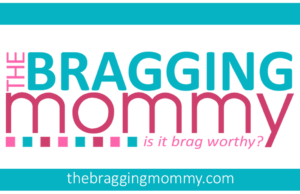Credit card fraud has become one of the most common forms of identity theft in the United States, with an increasing number of reported cases each year. Unfortunately, fraudsters are getting more creative, and the methods they use to steal your financial information are evolving. Because of this, it’s more important than ever to understand the different types of credit card fraud, recognize the signs that you may have become a victim, and know how to recover if it happens to you.

One of the many reasons it’s so important to be aware of credit card fraud is that it doesn’t just affect your credit score; it can also lead to financial setbacks and stress. If you’re dealing with other financial challenges, like high-interest debt, you might want to explore debt settlement in North Dakota or other local options. But before you can tackle debt, you must first make sure your credit cards aren’t compromised. Here’s what you need to know about credit card fraud and how to protect yourself.
Types of Credit Card Fraud
Credit card fraud comes in many forms, and fraudsters use various methods to steal your information. Here are some of the most common types of credit card fraud:
1. Card-Not-Present Fraud
Card-not-present (CNP) fraud occurs when someone makes an unauthorized purchase online or over the phone using your credit card information. Since there’s no physical card involved, it’s easier for criminals to use stolen credit card details to complete transactions.
CNP fraud is often carried out after hackers get access to data from a retailer’s database, or when phishing attacks trick you into providing your card details online. This type of fraud is on the rise, particularly as more consumers turn to e-commerce.
To protect yourself from CNP fraud, always be cautious when shopping online. Only enter your card information on trusted, secure websites (look for “https” in the URL), and never share your credit card information over unsecured networks or with suspicious sources.
2. Skimming and Data Breaches
Skimming is a method where fraudsters use small devices, called skimmers, to illegally capture the magnetic strip data from your credit card. These devices are often placed on ATMs, gas station pumps, or point-of-sale terminals. Once the fraudster has your card details, they can create a copy of your card and use it for fraudulent transactions.
In addition to skimming, data breaches at companies and retailers have become a significant concern. Hackers breach security systems to steal credit card information from large databases, affecting thousands or even millions of consumers. If your card details are compromised in a data breach, fraudsters may use them to make purchases or even sell them on the dark web.
To avoid skimming, check ATMs and card readers for any unusual attachments or signs of tampering before you use them. For data breach prevention, regularly monitor your credit card statements and change your account passwords frequently. If a company you’ve used experiences a breach, be sure to take action right away by changing your card details and monitoring your accounts.
3. Account Takeover Fraud
Account takeover fraud happens when a criminal gains access to your credit card account and uses it for unauthorized purchases. The fraudster may use stolen personal information (like your Social Security number, date of birth, or address) to answer security questions or access your account through online banking.
Once the fraudster has control of your account, they may change your password, add new users, or make large purchases. Account takeover can go unnoticed for a long time if you’re not monitoring your account regularly.
To protect against account takeover, enable multi-factor authentication (MFA) on your accounts whenever possible. This adds an extra layer of security by requiring you to verify your identity through another method, such as a text message or email confirmation.
4. Lost or Stolen Credit Cards
One of the simplest and most direct forms of credit card fraud occurs when someone physically steals your card or if you lose it. The fraudster may then use the card until it’s reported as lost or stolen.
While this type of fraud is becoming less common with the rise of digital payments, it’s still important to take immediate action if your credit card is lost or stolen. If you lose your card or suspect it has been stolen, report it to your credit card issuer right away. They can freeze the account and issue you a new card with a new number.
Signs You’ve Become a Victim of Credit Card Fraud
While fraud can happen in a variety of ways, there are some common signs that you might have fallen victim to credit card fraud:
- Unfamiliar transactions: If you notice charges on your statement that you didn’t make, it’s a clear sign that something may be wrong.
- Unexplained account activity: Check your account for any unusual activity, such as large purchases, withdrawals, or account changes that you didn’t authorize.
- Declined transactions: If your card is declined when you know you have sufficient credit or funds, it could mean that your account has been compromised.
- Sudden changes to your credit score: A sudden dip in your credit score may indicate that fraudsters are using your card and causing damage to your credit.
If you spot any of these signs, take action immediately by reporting the issue to your credit card issuer, freezing your account, and disputing unauthorized transactions.
What to Do If You Become a Victim of Credit Card Fraud
If you find that you’ve fallen victim to credit card fraud, here are the steps you should take:
- Contact your credit card issuer: Immediately report any unauthorized charges or suspicious activity. Most credit card companies have fraud departments that handle these cases and can help freeze your account or issue a new card.
- Dispute the fraudulent charges: Your credit card issuer will likely help you dispute the charges and may offer fraud protection policies to protect you from financial loss.
- File a police report: If you believe that your personal information has been stolen or your card was used in a fraudulent transaction, file a report with your local police. This is especially important if the fraud involves significant financial loss.
- Monitor your credit: Check your credit report regularly to ensure that no further fraudulent accounts or charges are appearing. Consider setting up credit monitoring services to alert you to any changes.
Preventing Credit Card Fraud
The best way to protect yourself from credit card fraud is to be proactive. Here are some key tips to help you stay safe:
- Use strong passwords: Avoid using easily guessed passwords for online shopping sites or credit card accounts. Opt for longer, more complex passwords with a mix of numbers, letters, and special characters.
- Activate alerts: Set up account alerts for transactions, so you’re notified when a charge is made. This helps you catch fraud early.
- Shred documents: Shred any paper documents containing personal information, such as credit card statements, before disposing of them.
- Avoid public Wi-Fi: Don’t make financial transactions over public Wi-Fi networks. Use a secured connection or a VPN to protect your information.
Final Thoughts
Credit card fraud is an ongoing issue that can affect anyone. By staying vigilant, checking your statements regularly, and taking immediate action if you notice anything suspicious, you can protect yourself from the harmful consequences of fraud. Be proactive with securing your credit card information, and don’t hesitate to report any issues immediately to your card issuer. With the right precautions in place, you can reduce your risk of becoming a victim and stay on track with your financial goals.




